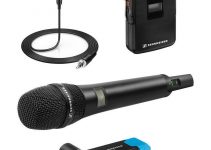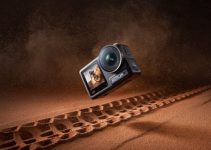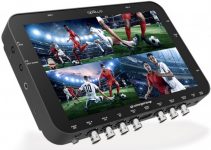Colour correction was always considered to be a specialist domain until recent years when it not only became accessible to all users with an NLE but essential for working with modern digital cameras. One of the most powerful and best priced tools for basic and advanced colour correction is Blackmagic’s DaVinci Resolve.
DaVinci Resolve has been one of the industry standards for colour correction for some time now. It began as a pure colour tool and has added elements of other NLE’s as time has gone on, unlike most other programs that have done the reverse. And the price? The basic version is free! Doesn’t get much better than that.
Casey Faris DaVinci Resolve Scope Tips
Using color (I make no apologies for using the English spelling) scopes as a way to understand your image is something I find fascinating. Scopes don’t lie and they can help you identify color casts, color imbalance, exposure issues, over and under saturation and so much more. If your project is going to traditional broadcast they are really essential in creating a legal image. Once you know the basics – scopes are your friend. Here are a few tips on how to read them in DaVinci Resolve.
The Waveform Monitor – in this example the waveform monitor is set to Brightness. It can be a little daunting when you first open any color correction scopes but they are actually fairly simple. This scope is showing the levels brightness within your image. The brighter, the higher up on the graph with black at the very bottom and white at the very top. The brightness is measured horizontally throughout the image and once you see the relationship between the graph and your image it can be very helpful in determining any corrections you wish to make.
For example, if you want your image to have more contrast then lowering dark areas to be nearer pure black and raising bright areas will achieve this. There are also broadcast legal limits for brightness and these should be checked before completing a broadcast-ready project.
The RGB Parade – Similar to the waveform monitor but split into three primary colors, the same three that come from your cameras’ Bayer sensor – Red, Green, and Blue. It is the same style of graph as the brightness monitor but now you can see the different levels of brightness for each color. This scope is handy for identifying white balance issues or color casts in your image.
The Vector Scope – This is a circular graph and it shows Hue and Saturation, i.e. the color and how much of it, is in the image. The little “cloud” as Casey calls, it represents all the color in your image, and how far out from the center point the cloud reaches shows the level of saturation of each color.
There are 5 small markers within the circle that indicate 5 pure color points and usually a skin tone line. Increasing saturation of the whole image will move all the cloud outwards towards the outside of the circle. Increasing the saturation of a particular color will move that color outwards.
The best way to learn how to use color scopes is to load up some of your own footage and have a play with them. They are there for a good reason – to make sure your image is technically correct and fit for broadcast – but they also help you answer the basic question “do I like this image?”.
The scopes may have fancy names but in reality they are basic tools that can be fun to use. Scopes are there to give you information so you don’t have to rely on your eyes or your particular monitor for important technical information.
Once you have a grip on them, color correction becomes a standard part of your workflow. If you feel comfortable with color correction then the next step is color grading when you create a ‘look’ for your image. That’s when things get really interesting.
[source: Casey Faris]
Disclaimer: As an Amazon Associate partner and participant in B&H and Adorama Affiliate programmes, we earn a small comission from each purchase made through the affiliate links listed above at no additional cost to you.




